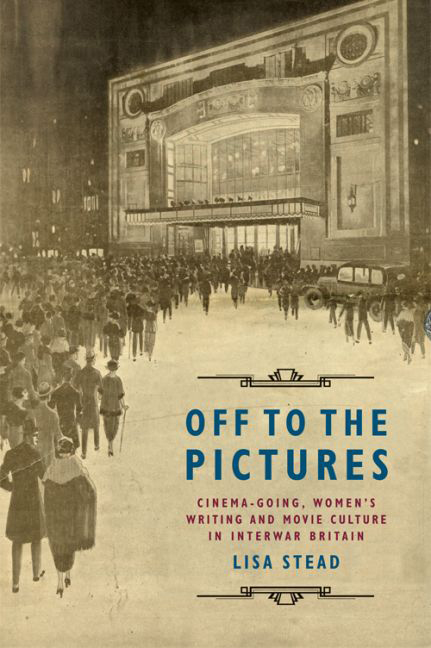Book contents
- Frontmatter
- Contents
- List of Figures
- Acknowledgements
- Dedication
- Introduction
- 1 Off to the Pictures: Cinema, Fiction and Interwar Culture
- 2 Screen Fantasies: Tie-ins and the Short Story
- 3 Middlebrow Modernity: Class, Cinema-going and Selfhood
- 4 Wander, Watch, Repeat: Jean Rhys and Cinema
- 5 Film Talk: C. A. Lejeune and the Female Film Critic
- 6 Elinor Glyn: Intermedial Romance and Authorial Stardom
- Afterword
- Bibliography
- Index
2 - Screen Fantasies: Tie-ins and the Short Story
Published online by Cambridge University Press: 15 September 2017
- Frontmatter
- Contents
- List of Figures
- Acknowledgements
- Dedication
- Introduction
- 1 Off to the Pictures: Cinema, Fiction and Interwar Culture
- 2 Screen Fantasies: Tie-ins and the Short Story
- 3 Middlebrow Modernity: Class, Cinema-going and Selfhood
- 4 Wander, Watch, Repeat: Jean Rhys and Cinema
- 5 Film Talk: C. A. Lejeune and the Female Film Critic
- 6 Elinor Glyn: Intermedial Romance and Authorial Stardom
- Afterword
- Bibliography
- Index
Summary
The ‘Cinema Novel 4d. Library’ will contain thrilling, fascinating, long, complete novels written by writers having an intimate knowledge of the Secrets of the Film World.
No. 1 – ‘STELLA OF THE STALLS.’
No. 2 – ‘HELD FROM THE DESERT.’
Nos. 3 and 4 of the ‘Cinema Novel 4d. Library’ will be ready shortly. See that you get your copy.
J. EdwardsThe copy above appears on the reverse cover of ‘Stella of the Stalls’, part one of a four-part series of cinema novelettes, published in the early 1930s. The library series promised to illuminate the behind-the-scenes world of the cinema for the ‘twenty million people’ who visited ‘the cinemas of this country every week’. The Cinema Novels offered insight not just into the stars of the screen, but into a host of other figures from across the film world by fictionalising and dramatising ‘their romances, their successes and their disillusionments’ (c.1930: back cover).
From the tens and teens and across the interwar period, short-story fiction offered a mutable platform for the promotion and consumption of film in these kinds of ephemeral forms. Short stories enticed readers with insider knowledge and romantic narratives centred on film stars and the film world, often attempting to pull them in with ongoing series and serialisations. At the same time, these modes of storytelling presented a vehicle through which to craft creative responses to the growth of cinema culture and its impact on everyday life. Stories focused upon working-girl, rags-to-riches tales, narrativising women's everyday cinema-going, and embedding themselves as ephemeral reading matter within the everyday experiences of female readers. Original cinema fantasies, cinema-themed short fictions and adapted tie-in stories were quick to take root across a body of print ephemera, which incorporated women's magazines, story papers and novelettes, alongside cinema programmes and papers tied to specific exhibition venues.
Films adapted to tie-in stories, penned by both women and men, could flesh out or condense their screen counterparts, potentially offering expanded character back-stories, narrating thoughts and desires and adding dialogue. As critics such as Andrew Shail and Ben Singer have suggested, prose tie-ins could also be a way to help readers navigate or interpret early filmic modes of storytelling by adding exposition or clearer resolution.
- Type
- Chapter
- Information
- Off to the PicturesCinemagoing, Women's Writing and Movie Culture in Interwar Britain, pp. 32 - 68Publisher: Edinburgh University PressPrint publication year: 2016



